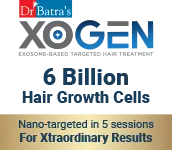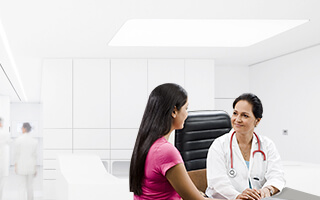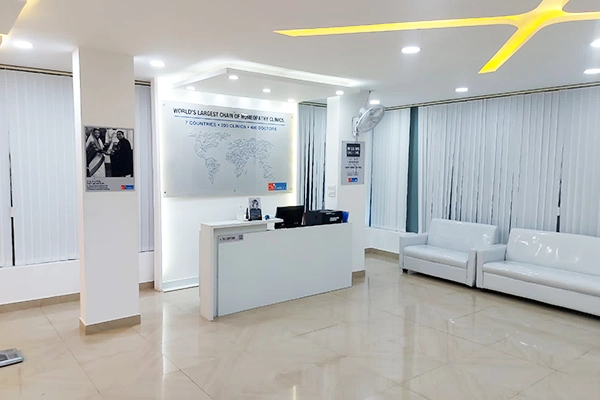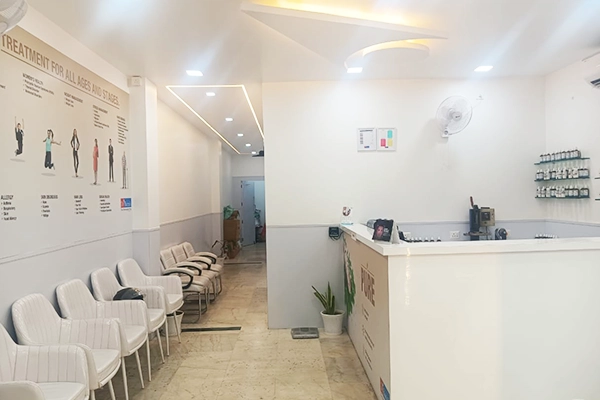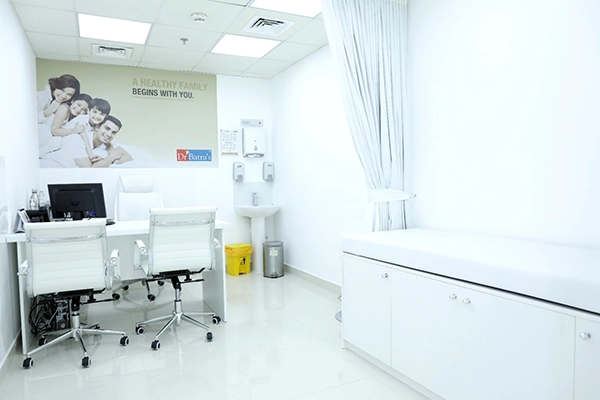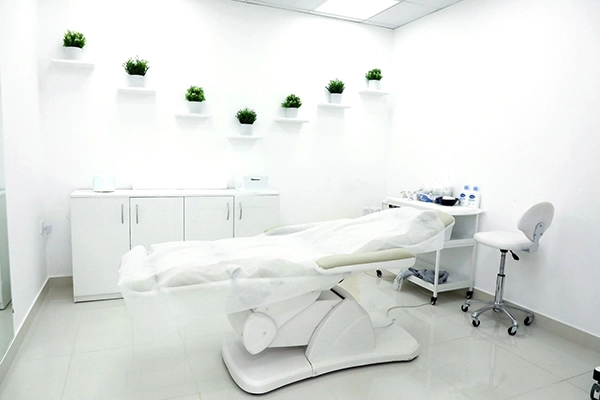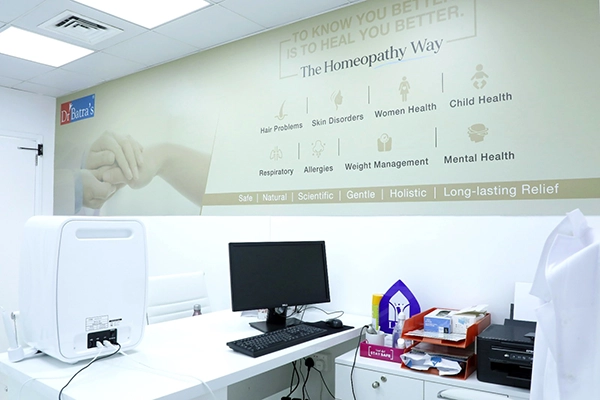Gallstones Treatment in Dubai & Abu Dhabi
Gallstone homeopathy treatment is essential for those experiencing abdominal pain, nausea, and digestive discomfort due to gallbladder stones. These solid deposits form when bile hardens, leading to blockages and severe symptoms. Without treatment, gallstones can cause long-term health complications.
Early intervention is key to preventing pain and complications. At Dr Batra’s® UAE, we provide safe and natural homeopathic treatment for gallstones, which helps restore your digestive health without relying on any invasive procedures.
Book an appointment today and take the first step toward lasting relief from gallstones!
Why Choose Dr Batra’s® for Gallstones Treatment in Dubai?
Trusted Expertise in Homeopathy
Dr Batra’s® has been a pioneer in homeopathic healthcare for over 40 years. Our experienced doctors have successfully treated thousands of patients struggling with digestive issues, including gallstones.
Personalised Treatment Plans
We understand that every individual is unique. Our customised homeopathy-based treatment for gallstones ensure that your treatment is suitable for your specific body type and health conditions.
Natural & Safe Approach
Unlike surgical interventions, homeopathic treatments are gentle and do not cause complications or side effects, which makes homeopathy a safe choice for gallbladder health.
Holistic Healing from Within
Our treatment is focused on restoring the digestive balance of your body by improving and strengthening your overall well-being to not only treat your current gallstones problem, but also reduce the chances of recurrence. Take control of your health today! Book a consultation with Dr Batra’s® and get natural relief from gallstones.
Get Gallstones Treatment at Conveniently Located Clinics in Dubai & Abu Dhabi
Reviews of Dr Batra’s® Gallstones Treatment in Dubai & Abu Dhabi
Our Gallstones Treatment Process
Step 1: Personalised Consultation
Our doctors conduct a detailed assessment of your medical history, diet, and digestive health to identify the root cause of gallstones before recommending a treatment plan.
Step 2: Homeopathic Treatment
We prescribe natural homeopathic remedies that help regulate bile production, improve digestion, and reduce the risk of gallstone formation without invasive procedures.
Step 3: Holistic Lifestyle Guidance
Our doctors provide dietary recommendations to support gallbladder health, including foods that aid digestion and prevent further stone development.
Step 4: Progress Monitoring
We track your symptoms and overall digestive health, making necessary adjustments to your treatment plan for optimal recovery and long-term relief.
What are Gallstones?
Gallstones are solid deposits that form in the gallbladder. They develop when substances in bile—such as cholesterol, bile salts, and bilirubin—become imbalanced. Some gallstones are as small as a grain of sand. Others can grow large enough to block the bile ducts, causing severe pain and digestive issues.
How do Gallstones Form?
Bile is essential for digestion, but when its composition changes, excess cholesterol or bile pigment can crystallize, leading to gallstone formation. Factors like diet, hormones, and liver function play a role in this process.
How Gallstones can Cause Cholecystitis
The gallbladder is a small, pear-shaped organ located under the liver. It helps with digestion by storing and releasing bile juice, a fluid that breaks down fats. This fluid contains cholesterol, bile salts, water, and bilirubin (a bile pigment).
Normally, bile flows smoothly from the gallbladder into the small intestine. However, if a gallstone blocks the bile duct, it can cause inflammation and pain, a condition known as cholecystitis.
If bile gets trapped due to a gallstone, the gallbladder becomes swollen and irritated, leading to acute cholecystitis (sudden inflammation). If this inflammation is not detected early and allowed to continue for a period of time, the gallbladder walls can harden and thicken, which can lead to chronic cholecystitis.
Symptoms of Gallstones
Gallstones often remain asymptomatic, with many individuals unaware of their presence. However, when symptoms do manifest, they can include:
- Biliary Colic: Sudden and intense pain in the upper right abdomen, which may radiate to the back or right shoulder. This pain, known as biliary colic, can last from 15 minutes to several hours and often occurs after consuming a heavy meal or during the night.
- Nausea and Vomiting: Accompanying the abdominal pain, individuals may experience feelings of nausea and episodes of vomiting.
- Fever and Chills: In cases where a gallstone causes an infection or significant inflammation, symptoms can escalate to include fever and chills.
- Jaundice: A yellowing of the skin and eyes may occur if a gallstone obstructs the bile ducts, leading to a buildup of bilirubin in the body.
Common Causes of Gallstones
Gallstones form when there's an imbalance in the substances that make up bile, leading to the crystallization and hardening of these components. Primary causes include:
- Excess Cholesterol in Bile: When the liver secretes more cholesterol than bile can dissolve, it can precipitate and form stones.
- High Bilirubin Levels: Conditions like liver cirrhosis, biliary tract infections, or certain blood disorders can cause the liver to produce excessive bilirubin, contributing to gallstone formation.
- Incomplete Gallbladder Emptying: If the gallbladder doesn't empty effectively or completely, bile can become concentrated, leading to stone formation.
These factors disrupt the delicate balance required to maintain bile in a liquid state, resulting in the formation of gallstones.
Risk Factors of Gallstones
Several factors can increase the likelihood of developing gallstones:
- Gender and Age: Women, particularly those over 40, are more susceptible due to hormonal influences.
- Obesity: Excess body weight increases cholesterol levels in bile, promoting stone formation.
- Rapid Weight Loss: Quick shedding of pounds can cause the liver to release additional cholesterol into bile.
- Diet: Diets high in fat and cholesterol and low in fiber can elevate the risk.
- Family History: A genetic predisposition can play a role in gallstone development.
- Other Medical Conditions: Diabetes, liver disease, and certain blood disorders can contribute to gallstone formation
Understanding these risk factors is crucial for both prevention and early detection of gallstones.
Potential Complications Caused by Gallstones
If left untreated, gallstones can lead to several serious complications:
- Cholecystitis: Inflammation of the gallbladder, often resulting from a blocked cystic duct, leading to severe pain and potential infection.
- Bile Duct Obstruction: Stones can migrate and block bile ducts, causing jaundice and bile infections.
- Pancreatitis: Obstruction of the pancreatic duct by gallstones can lead to inflammation of the pancreas, a condition known as pancreatitis.
- Gallbladder Cancer: Chronic gallstone disease has been linked to an increased risk of gallbladder cancer, although this is rare.
Recognising and addressing gallstones promptly can prevent these potentially life-threatening complications.
Homeopathic Treatment for Gallstones
Homeopathic treatment for Gallstones focuses on addressing the root cause rather than just relieving its symptoms.
Homeopathy works by reducing inflammation, improving bile flow, and relieving the pain associated with gallstones. The treatments are gentle yet effective in providing long-term relief without the risks of side effects often associated with medications or surgery.
Book your consultation for a homeopathic solution for Gallstones!
FAQs
How common is cholecystitis or gallstones in teenagers?
It is very rare for a teenager to suffer from cholecystitis or gallstones. This tends to occur due to the following reasons:
- Major surgery
- Critical illnesses such as serious injuries, major burns and severe infections
- Intravenous feedings for a long time
- Fasting for a long duration
- Deficiency in the immune system
- in young children, perhaps, developed from a viral or another infection
Why do some people get jaundice when they have gallstones?
The gallbladder produces bile. When the organ is diseased or affected by stones, bile spreads to cells in the entire body instead of going into the stomach and intestines to help digest food. This leads to jaundice with cholecystitis.
Will drinking liquor make my gallstones flare up?
Yes, alcohol will irritate your gallstones; it is one of the main causes of gallbladder infection-related pain. The gall bladder is linked to the pancreas, and alcohol can adversely affect the pancreas as well.
Why does rapid weight loss sometimes cause gallstones?
Any change in eating habits (diet) is going to disturb your digestive tract. This disturbance may cause change in the concentration of various constituents of bile juice in the gallbladder, leading to stone formation.
What foods should be avoided when someone has gallstones?
Avoid foods that are high in fat and very greasy. The gallbladder releases bile to break down fat, and consuming fatty foods can further irritate an inflamed gallbladder.
My wife is five weeks pregnant, and she has a history of gallstones. How likely is she to develop cholecystitis?
Pregnancy increases the risk of developing cholecystitis. Doctors typically manage the condition with medication, dietary adjustments, and other non-surgical treatments to avoid the need for surgery during pregnancy.
Will I have to go through surgery if I am taking homeopathy for my gallstones?
If the size of your stone is big, and your pain attacks are severe and recurrent, you may have to undergo surgery. Homeopathy usually helps when the size of the stone is small and inflammation is not very severe.
